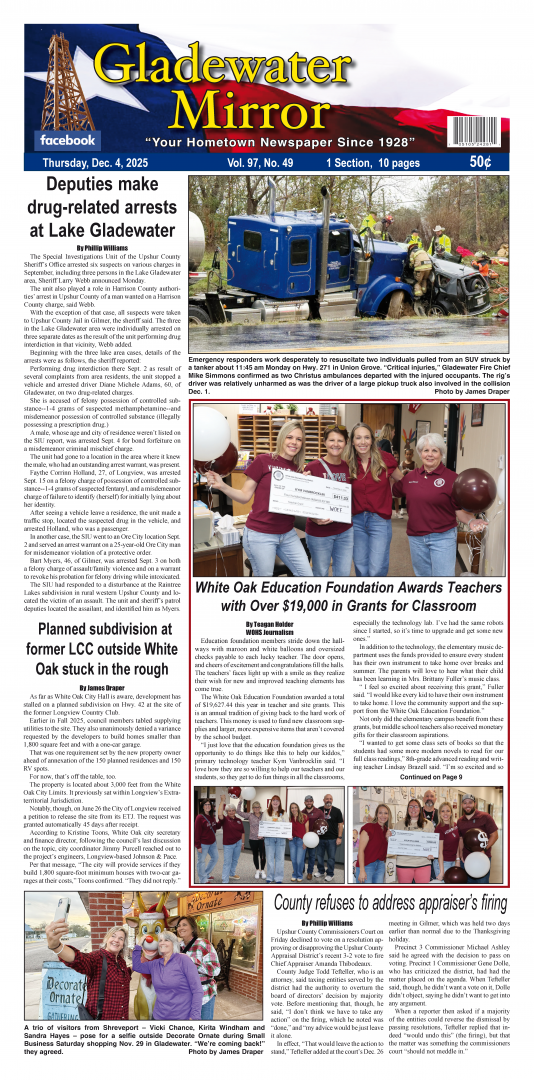Bad news: Texas is running out of water.
Good news: There are several solutions local and state leaders can take to make sure we don’t.
By Alejandra Martinez and Jayme Lozano Carver
The Texas Tribune
Gladewater city officials are already tapping into these solutions as the state’s water supply is threatened by a changing climate, rapid population growth, and outdated infrastructure, which loses billions of gallons of water each year. Texas’ water demand is growing. By 2070, the state is projected to need an additional 7.7 million acre-feet of water per year to meet the needs of residents, farmers, and industries if strategies are not implemented.
The answers to our water crisis range from the traditional (think reservoirs) to the innovative (think desalination).
Texas lawmakers are expected to pledge billions of dollars to the state’s water supply this spring. However, there is a big debate on which strategies to invest in. Do we invest more into creating new water supplies or repairing old, leaking pipes statewide?
The Texas Water Development Board has recommended more than 2,400 water management strategy projects to increase water supply – the City of Gladewater has projects on the table that are funded through the board. The cost to implement those strategies statewide is estimated to be $80 billion (in 2018 dollars) by 2070, not including inflation. No single solution can meet all of Texas’ water needs. And it will not be cheap. Water experts say policymakers must invest wisely, ensuring the most cost-effective and sustainable solutions are prioritized.
Of particular interest in Gladewater, White Oak and similar cities, is one of the obvious solutions (at least to water experts) in fixing the state’s aging water infrastructure.
Leaking pipes and deteriorating treatment plants have led to billions of water being lost. In 2023 alone, 88 billion gallons of water were lost in Texas’ most populous cities, according to self-reported water loss audits submitted to the Texas Water Development Board.
“The most efficient water source that we have is the water that we already have,” said John Dupnik, a deputy executive administrator at the Texas Water Development Board.
Jennifer Walker, director for the Texas Coast and Water program with the National Wildlife Federation, said that fixing the infrastructure creates new water supplies because it’s water that wouldn’t be delivered to Texans otherwise.
“Anything that we can do to reduce waste is new water,” Walker said.
The Texas section of the American Society of Civil Engineers released their infrastructure report card last month. Texas received a D+ for drinking water, with the report emphasizing the role of aging infrastructure and the need for funding for infrastructure operation and maintenance.
One reason why the state’s water systems have fallen behind is costs. Most water systems are run by cities or local agencies, which have tried to keep water rates and other local taxes low. This is particularly true in rural Texas communities that have smaller populations and tax bases. Texas 2036 has estimated the state’s water agencies need nearly $154 billion by 2050 for water infrastructure.
Learn more about the state’s ongoing water strategies from the Texas Tribune via tinyurl.com/TexasWaterStrategy









